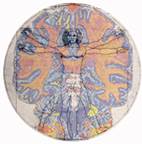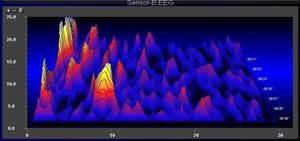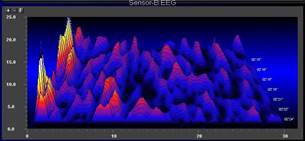WELCOME
- SUSAN A MATTHEWS HOME
- SHANTI SCHOOL HOME PAGE
- SPIRAL ANATOMY™
- STUDY GUIDE
- BRAIN WORKSHOP™ TRAINING
- GEORGE XU HOME PAGE
- CONTACT US
Website
Design: Susan Matthews
© 2003-2022
all rights reserved
No part of this website may be reproduced without expressed permission.
Using Tai Chi & Qigong for Chronic Stress, Anxiety, PTSD, Depression, Sleep Disorders

Tai Chi is a Movement Art for the Brain Practicing Tai Chi and Qigong benefits veterans and any victim of trauma suffering with Post Traumatic Stress Disease (PTSD) through several mechanisms and this writing will identify important components of a robust practice. So, what is Tai Chi and what is Qigong? First of all, Tai Chi (and its historical name, taijiquan), is evolved from Chinese martial arts and is more popularly practiced as an exercise to promote overall health and longevity. Translated it means “supreme ultimate fist” and is often referred to as taiji boxing. Practitioners do a variety of styles traditionally named after the family who developed their own particular style: Yang, Chen, Wu, Sun. As an exercise, Tai Chi is basically a sequence, or choreography, of postures and movements known as forms. Forms have martial applications; thus, it is a fighting art, as well as health exercise. Qigong, which is much older than Tai Chi, is primarily performed for the purpose of health, but with one great difference from the average healthy exercise— that is to build vital energy called ‘qi’ (pronounced “chee”). Characteristically, Qigong movements are performed repeatedly in a stationary position, either standing or seated. Tai chi usually requires stepping and changing position and directions. Tai Chi and the Brain Scientific discoveries about the brain and nervous system have revealed the brain's capability of plasticity—the intrinsic ability to change and grow—to adapt to environmental, physiological and behavioral cues. All physical and mental health is dependent primarily on a fine-tuned nervous system, yet rarely does conventional physical exercise take into account this understanding. Most of what we see these days is “muscle exercise” with secondary effects on the cardiovascular system and internal organs. This direct stressing of the cardiovascular system is promoted by western practitioners. In contrast, practitioners of Chinese internal martial arts, such as Tai Chi, have consistently used various forms of “meditative” movement as exercise to promote the ability of the brain to change and adapt to conditions experienced by the body. Plasticity, reprogramming, and making new neural pathways, can be accomplished by practicing Tai Chi, because it contains a multilevel approach that activates the brain for health, healing and even higher consciousness. Indeed, practitioners have cultivated the dynamic qualities found in Tai Chi to enhance physical and mental abilities well-beyond normal, and to further their learning paths. In terms of rehabilitation, these same qualities make it the "supreme ultimate" exercise to access the brain and to activate the nervous system to change, to even heal itself, through movement. Similar benefits can be achieved in many other types of exercise if they contain certain mind-movement principles. Running, walking, cycling, ballroom dancing (highly recommended, goes well with Tai Chi), tennis, golf, and everyday activities can be enhanced. I remember loving the idea of the old 1960s TV series “Kung Fu” with David Carridine. I needed his peaceful heart amidst conflict and confrontation—yet I also needed to be a fierce warrior who could protect myself. I experienced my own PTSD after being serially abused as a child. I can truly say I have accomplished a sense of peace, strength and well-being far beyond my dreams since starting Tai Chi nearly 40 years ago. Rest assured, however, that benefits can be experienced immediately with the right practice, plus they build up over time. Knowledge, ability and skill are cumulative with time and effort. This is known as one’s “gongfu.” Six ways Tai Chi and Qigong effect brain function (1) Rhythmic and (2) Synchronous movements train the brain: The first two, rhythmicity, and second, synchronicity, have been linked to brain activation during memory acquisition and learning, as well as neural information coding, growth and development, states of consciousness, perception and awareness, locomotion, autonomic function, neural repair, and rehabilitation. That’s a long list, but all you really need to know in order to begin is Tai Chi and Qigong movements are repetitive and rhythmic and slow motion. Slow, precise motion trains the brain for fast motion. One of the hallmarks of Tai Chi is the practice of “silk reeling” which is a training where all the joints of the body are coordinated to perform in a spiraling synchrony. The biomechanics at each joint are integrated with all other joints, and the force is generated from the ground. Practice trains the bone, tendon, ligaments, joints to be “connected” like a single snake. And through a special form of stretching in Tai Chi, the combined muscle force/activation patterns produce whole-body superior power without muscle. Communication between distant brain areas is important for integration of complex information to adapt to changes in the environment and to generate appropriate responses necessary for successful behavior in daily life. Through numerous experiments, it has been established that cortical neurons strengthen their connections by repeated stimulation and synchronous activation — this is called ‘Hebb's Rule’, commonly stated as “neurons that fire together, wire together.” On the basis of this, it has been assumed that perceptions or actions are represented in the brain by large numbers of distributed neurons firing in synchrony. Synchronous activity is often associated with oscillatory firing patterns, rhythms, in discrete frequency bands that represent certain aspects of behavior, learning, common motion, direction and velocity, or coordination. These rhythmic activities are synchronous over relatively large areas of the cortex and even deeper brain structures, between the left and right cerebral hemispheres, between the visual and motor (movement command) centers of the brain, and between the motor and somatosensory (what the body feels) centers. They are also enhanced in amplitude when performing new and complicated motor acts.
(4) Balanced left-right movement balances left-right brain activity: Fourth, balanced, integrated, left- and right-sided movement, as found in Tai Chi, must be accompanied by balanced brain activity; i.e., accessing the brain's neural circuitry is a direct approach to enhancing function or to healing physical and mental dysfunction resulting from mental trauma, mechanical injury or biochemical imbalance. I often think of Tai Chi as EMDR (Eye Movement Desensitization and Reprocessing Therapy) using the whole body. Balance is accomplished by using four major components of tai chi training: 1) central equilibrium training, the concept of maintaining a straight spine with an energetic central “plumb line”; 2) the biomechanics of spiraling in the joints, called silk reeling training mentioned above; 3) cultivation of a powerful physical and energetic connection to the ground called ‘root’; and 4) synchronization of right/left or bilateral (opposite sided) and ipsilateral (same sided) movement. Moving left and right sides together becomes linked in the nervous system, requiring tight interhemispheric coupling, plus synchronization binds movement into functional synergies: synergies in energy movement, brain and spinal cord rhythms, muscle activation, breathing, heart rate, and so on. Such movement activates the motor and sensory neural circuitry of the whole brain. To take balanced, rhythmic, left/right movement even further, we can add the movement model presented in Spiral Anatomy™ Training which describes and trains a specific backwards bicycle or reverse cycling rotational movement in all the joints. This movement facilitates spiraling in the joints, which allows for maximum fluid motion, so that the body flows like water. The practical application of this information is that slow rhythmic movement (1 Hz or one beat per second) may entrain, control, or balance a vast neuronal network. Thus, the slow-motion movements of Tai Chi forms may result in this kind of neural control. The comfort imparted by rocking and walking my daughter’s new baby, or the incessant kneading and purring of my cat, or the well-known benefits of therapeutic riding for developmental disorders, suggests the power of rhythmic movement. It also suggests that imbalanced activity results in imbalanced mental/emotional states, tremors and epileptic seizures, and could be a result of the loss of the superimposed slower rhythms. The graphs below show altered brain rhythms after performing a 1 Hz backwards bicycling movement.
EEG -quiet standingbackwards bicycle punching (5) Tai Chi engages multiple sensory systems to practice being in the present moment: Fifth, just as the motor system is trained in many ways, fast progress can be made by engaging multiple sensory systems (visual, kinesthetic, and sensory for gravity and position; muscle stretch and load; skin sensations, bone and joint stress, left/right weighting; rhythmicity; the sensation of qi) both physically and with mind intention. For example: simply visualizing sand filling the feet and legs causes greater stability, heaviness and a downward 'root'. Next, just turning your attention to the top of the head and visualizing an upward motion along a center line establishes a plumb line around which all movement and thought is balanced and focused. Mentally shifting sand from left to right, along with weight, sets up a rhythmic movement that can affect brain rhythms. Engaging the brain with attention on numerous positive sensations, thoughts, intentions, at the very least helps distract one from thinking about negative emotions. (6) Tai Chi trains the mind to harmonize movement of energy and physical movement: Sixth, in Tai Chi we are training the mind to: 1) increase awareness of the sensation of internal energy (qi) in the body; 2) direct the internal energy to flow in harmony with the physical movement; 3) allow the physical movement to follow the mentally directed energy flow, and; 4) ultimately cultivate awareness of the energetic movement in the space (universe) surrounding the movement. A person who trains mind-body-spirit on this level is learning to live as a spiritual/energy being. We are tapping into a direct internal experience of energy, light and love.
To recap, practicing Tai Chi and Qigong can benefit anyone with PTSD, stress and anxiety, and the most important components of a robust practice include: 1) Practicing relaxation and mindfulness training which is probably the most important thing a person can do to relieve symptoms of stress and chronic pain on many levels; 2) Practicing Qigong to increase circulation of qi, blood and lymph, and; 3) practicing gentle movement, meditative walking, Tai Chi form and gentle stretching. I recommend searching and trying many teachers and styles. Some have more levels of internal experience than others. I am grateful and very lucky to have trained with one of the best Chinese masters, George Xu, who exposed his students to the finest masters in China. Through this training, along with graduate education in neuroscience and anatomy, I have designed a program to supplement those who are learning and teaching the internal arts. Spiral Anatomy™ Training Course is presented as a series of videos and supplemental materials that are available for download. Module 1- Cultivating an Energy Body contains an extremely robust visualization, meditation program and Qigong. Module 2- Balance plus Brain Workshop™ contains materials to help you understand the physical and energetic principles of balance and to activate neurorehabilitation and repair. Module 3- Connect the Body Physically as One Unit with Power Stretching is essential for whole-body or one-unit, connected, loose, relaxed, spiraling power in all styles of martial arts. Power stretching is the next step essential for understanding how to repair posture to alleviate chronic health issues including chronic musculoskeletal pain. I invite you to visit www.SpiralAnatomy.com for more information. Susan A Matthews, MS, ND, is a Master of Chinese Internal Martial Arts, founder of the Shanti School of Taijiquan in Durango, Colorado, co-founder of Masters From China Video Productions, and practitioner of Tai Chi and Qigong for nearly 40 years. Neuroscientist, anatomist, biomechanist, and researcher in neural networks and neuroplasticity, spinal cord development, stroke rehabilitation, Parkinson's and pineal neurophysiology, she integrates Western scholarship and research in neuroscience with Chinese Internal Martial Arts training. She studies and teaches various internal martial arts styles, including Wu and Chen styles of Tai Chi, Xing Yi, Bagua, and the Lan Shou System. She is certified in the Mi Zong School of Medical Qigong. |
Links
Tai Chi and Qigong practice
seriously addresses many of the most pressing issues for a person with
chronic stress and anxiety-related symptoms in a gentle and safe way. See links below for more about how mindfulness, meditation and tai chi are helping with post traumatic stress (PTSD), traumatic brain injury, veterans.
Mind-Body Practices for post traumatic stress disorder. Mind-body practices are increasingly used in the treatment of PTSD and are associated with positive impacts on stress-induced illnesses such as depression and PTSD in most existing studies. Knowledge about the diverse modalities of mind-body practices may provide clinicians and patients with the opportunity to explore an individualized and effective treatment plan enhanced by mind-body interventions as part of ongoing self-care.
Abdominal breathing during meditation reduces negative mood and increases alpha brain activity and blood serotonin levels. After just twenty minutes of meditation by novices, significant changes were measurable via EEG (brain waves) and infrared spectroscopy (cerebral blood flow).
Alternative therapies like yoga, meditation and mindfulness training are helping to heal PTSD


 Merged PET-MRI brain section illustrating changes in cerebral blood flow during movement visualization. From: Lafleur, M. F., et al., 2002. Motor learning produces parallel dynamic functional changes during the execution and imagination of sequential foot movements. Neuroimage. 16, 142-157.
Merged PET-MRI brain section illustrating changes in cerebral blood flow during movement visualization. From: Lafleur, M. F., et al., 2002. Motor learning produces parallel dynamic functional changes during the execution and imagination of sequential foot movements. Neuroimage. 16, 142-157. 
